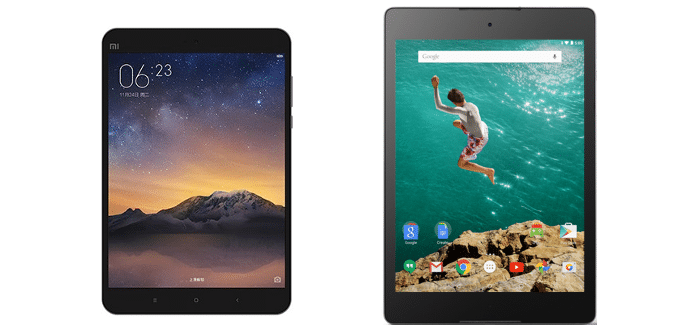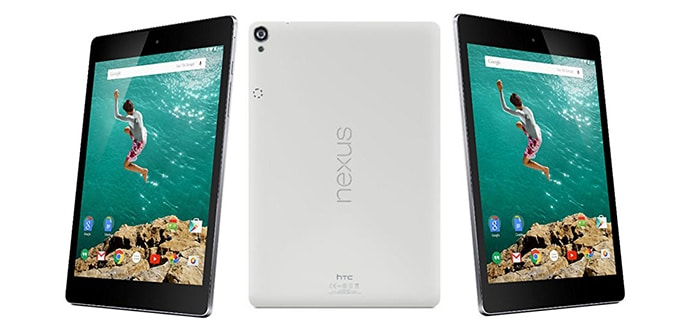
Today's comparison is a bit atypical due to the difference in size between the two tablets, although due to the bet of Google for the middle step between the 10-inch tablets and the compact ones, is what always happens when we face the Nexus 9 to practically any other high-end. Taking into account that its price hardly differs from that of the iPad mini 4, Galaxy Tab S2 o Z3 Xperia Tablet Compact, gives us an opportunity just as good as them to test the quality / price ratio of the Mi Pad 2. Which of the two tablets is better for you, the Xiaomi or of Google? We help you decide by reviewing its technical specifications.
Integrated
The Google tablet not only has a larger screen, but it also has wider frames, which is probably the difference between the two that attracts the most attention, at least with regard to the front, since if we look at it on the rear case, the most remarkable thing is that while the Mi Pad 2 has made the leap to the aluminum housing, in the Nexus 9 plastic is still the predominant material.
Dimensions
We have just seen that the difference in screen size must be added some wider frames in the Nexus 9, so it cannot surprise us that it is noticeably larger than the Mi Pad 2 (20,4x13,26 inch against 22,82x15,37 inch). The difference in weight is, logically, quite remarkable too (322 grams against 425 grams) being the thickness the one that goes the most unnoticed (7 mm against 8 mm).

Screen
The aforementioned size difference (7.9 inches against 8.9 inches) is probably the most important between both screens, since they coincide both in aspect ratio (4:3, optimized for reading) and resolution (2048 x 1536), although the inch that separates them makes the pixel density higher on the tablet of Xiaomi (PPI 324 against PPI 281).
Performance
The first model of the Mi Pad and Nexus 9 shared a processor, but things have changed with this second generation that has changed to Nvidia by Intel, although the differences between the two are not too great (four cores and maximum frequency of 2,24 GHz versus two cores and maximum frequency of 2,3 GHz). In RAM we do have an absolute tie, in any case, with 2 GB each one, but the Google tablet has in its favor the fact that the update to Android Marshmallow.
Storage capacity
The balance is tilted to the side of the table Xiaomi in the storage capacity section, despite the fact that the basic model in both cases is 16 GB: first of all, for giving us the option to expand it externally via card micro-SD; second, because the higher version has twice the space (64 GB against 32 GB).

Cameras
Although it is probably not its main virtue, if we really need a good front camera, the Mi Pad 2 has the upper hand at this point with a 5 MP over the 1,6 MP of the of Google. The main chamber, however, is similar in both, with 8 MP.
Autonomy
Considering the difference in size and that it has to power a larger screen, not only are we not surprised that the Nexus 9's battery has more capacity, but we find that the difference is even relatively small (6190 mAh against 6700 mAh). You already know, in any case, that the important data is given to us by independent autonomy tests, which also take consumption into account.
Price
As we said at the beginning, the Nexus 9, sold for $389 in Google Play (although if we are attentive we will probably find it even cheaper in other distributors), which is a really interesting price for a tablet of its size but the truth is that it is far from being as tempting as the $150 for which the Mi Pad 2 in China. It must be borne in mind, of course, that while the Google tablet is sold directly in our country and has extras such as having guaranteed updates for at least two years (and being the first to receive them), with the tablet from Xiaomi we are going to depend on the conditions of the importers, something that, to begin with, is always going to be noticed in the price.
Google nexus 9 is Android in its purest form.